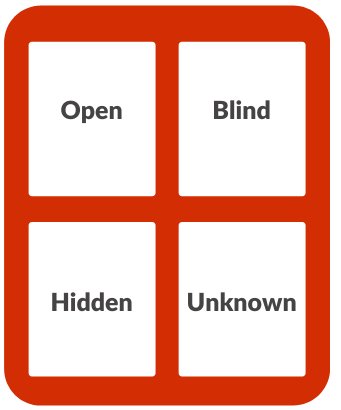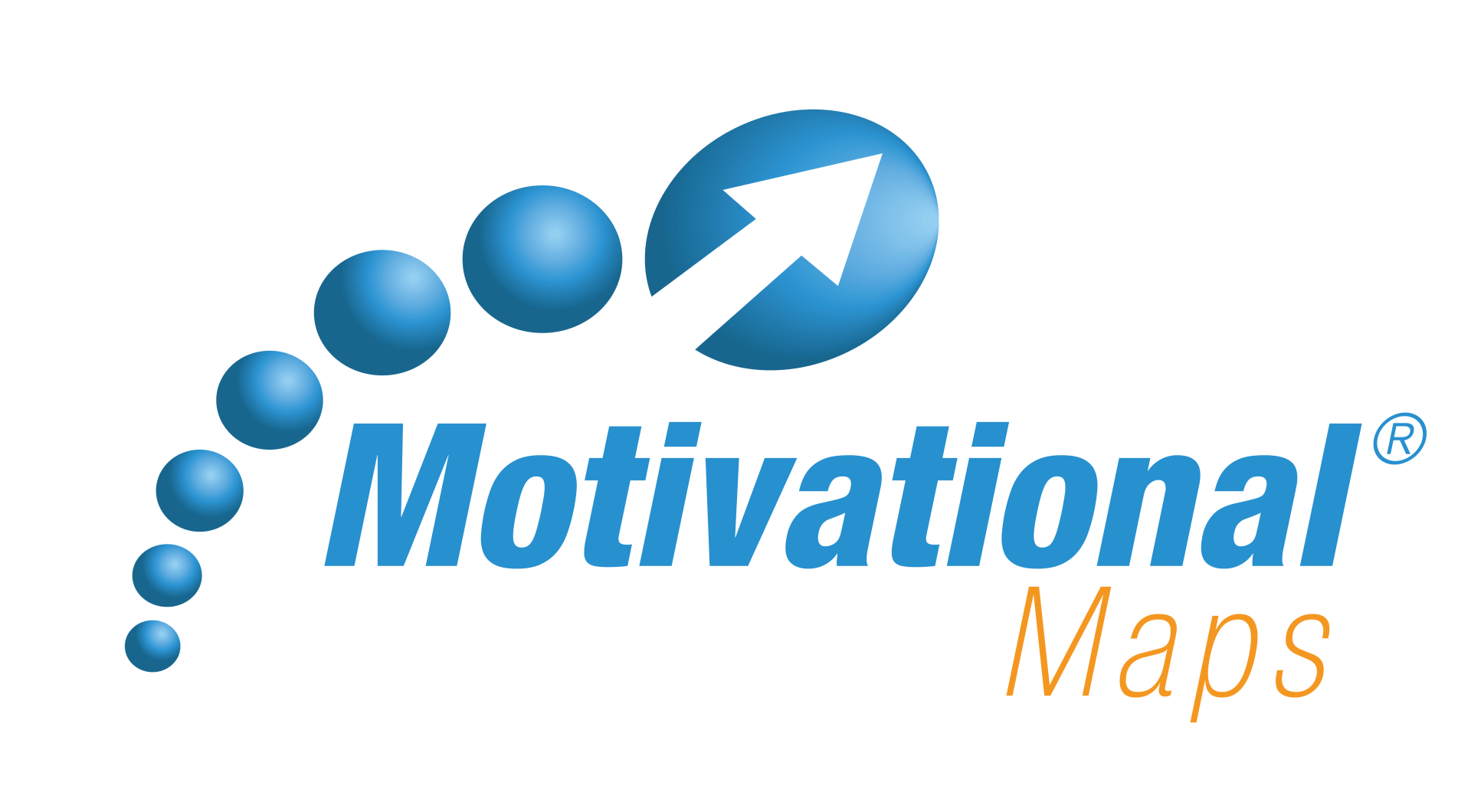Resources:
The Johari Window

The Johari Window is a simple model to aid self reflection and feedback.
It can be used when coaching individually or in groups and gives employees the opportunity to consider their self perception, what others know about them and the importance of communication and trust in building a winning team.
Step 1: Watch the video
This video explains what the Johari Window is and walks through its four segments - Open, Hidden, Blind and Unknown.

Step 2: Setting the scene
When conducting a Johari Window exercise, it can be best to open with a few scene setting questions to get employees thinking:
1) What's preventing me from sharing my thoughts with others?
2) How can I be more receptive to what others think about me?
3) What is some favourite feedback about myself that I'd like to have and whom would I like to have it from?
4) To help my team work better together, what feedback would I like to give?
Step 3: Exercise
The purpose of this exercise is to:
- help employees reflect on their own windows.
- with the support and feedback of their manager and colleagues, learn more about themselves.
- strengthen trust between members of the team.
Instructions:
- Find someone to do this exercise with (great if they’ll stretch you!)
- Choose six adjectives from the list that best describe you (don't tell your partner at this stage!)
- Ask your partner to also choose six adjectives that they think and feel best describe you (again, they should keep it secret!)
- Then ask your partner to reveal the adjectives they chose.
- Compare it against the adjectives you chose and write each one in the appropriate window on the worksheet as follows:
- Open Window - When an adjective appears on both lists.
- Hidden Window - When an adjective appears on your list, but not your partners.
- Blind Window - When an adjective appears on your partners list, but not yours.
- Unknown Window - Any adjective that appeared on neither list.
- Then swap round, so your partner takes the lead.
- When you have completed the task for each other, consider the following questions on how you will use what you have learned from this exercise:
- What were the biggest surprises to you regarding your blind spots?
- Which adjectives may be helpful to you now you know others perceptions?
- What hidden adjectives would you like to show more often?
- What would be the first step you could take to move in this direction?
Download the kit and get started!
Need help with employee motivation?
We help coaches, consultants and organisations thrive.
I'm a coach or consultant
wanting to radically boost my value by becoming a qualified expert in motivation.
I'm an organisation
wanting to solve my recruitment, retention and workforce motivation challenges.

Resources:
The Johari Window

The Johari Window is a simple model to aid self reflection and feedback.
It can be used when coaching individually or in groups and gives employees the opportunity to consider their self perception, what others know about them and the importance of communication and trust in building a winning team.
Step 1: Watch the video
This video explains what the Johari Window is and walks through its four segments - Open, Hidden, Blind and Unknown.

Step 2: Setting the scene
When conducting a Johari Window exercise, it can be best to open with a few scene setting questions to get employees thinking:
1) What's preventing me from sharing my thoughts with others?
2) How can I be more receptive to what others think about me?
3) What is some favourite feedback about me I'd like to have and whom would I like to have it from?
4) To help my team work better together, what feedback would I like to give?
Step 3: Exercise
The purpose of this exercise is to:
- help employees reflect on their own windows
- with the support and feedback of their manager and colleagues, learn more about themselves.
- strengthen trust between members of the team.
Instructions:
- Find someone to do this exercise with (great if they’ll stretch you!)
- Choose six adjectives from the list that best describe you (don't tell your partner at this stage!)
- Ask your partner to also choose six adjectives that they think and feel best describe you (again, they should keep it secret!)
- Then ask your partner to reveal the adjectives they chose.
- Compare them against the adjectives you chose and write each in the appropriate window on the worksheet as follows:
- Open Window - When an adjective appears on both lists.
- Hidden Window - When an adjective appears on your list, but not your partners.
- Blind Window - When an adjective appears on your partners list, but not yours.
- Unknown Window - Any adjective that appeared on neither list.
- Then swap round, so your partner takes the lead.
- When you have completed the task for each other, consider the following questions on how you will use what you have learned from this exercise:
- What were the biggest surprises to you regarding your blind spots?
- Which adjectives may be helpful to you now you know others perceptions?
- What hidden adjectives would you like to show more often?
- What would be the first step you could take to move in this direction?
Download the kit and get started!

Need help with employee motivation? We enable coaches, consultants and organisations to thrive.
I'm a coach or consultant
wanting to radically boost my value by becoming a qualified expert in motivation.
I'm an organisation
wanting to solve my recruitment, retention and workforce motivation challenges.
Resources:
The Johari Window

The Johari Window is a simple model to aid self reflection and feedback.
It can be used when coaching individually or in groups and gives employees the opportunity to consider their self perception, what others know about them and the importance of communication and trust in building a winning team.
Step 1: Watch the video
This video explains what the Johari Window is and walks through its four segments - Open, Hidden, Blind and Unknown.

Step 2: Setting the scene
When conducting a Johari Window exercise, it can be best to open with a few scene setting questions to get employees thinking:
1) What's preventing me from sharing my thoughts with others?
2) How can I be more receptive to what others think about me?
3) What is some favourite feedback that I'd like to have and whom would I like to have it from?
4) To help my team work better together, what feedback would I like to give?
Step 3: Exercise
The purpose of this exercise is to:
- help employees reflect on their own windows
- with the support and feedback of their manager and colleagues, learn more about themselves.
- strengthen trust between members of the team.
Instructions:
- Find someone to do this exercise with (great if they’ll stretch you!)
- Choose six adjectives from the list that best describe you (don't tell your partner at this stage!)
- Ask your partner to also choose six adjectives that they think and feel best describe you (again, they should keep it secret!)
- Then ask your partner to reveal one of the adjectives they chose.
- Compare it against the adjectives you chose and write it in the appropriate window on the worksheet as follows:
- Open Window - When an adjective appears on both lists.
- Hidden Window - When an adjective appears on your list, but not your partners.
- Blind Window - When an adjective appears on your partners list, but not yours.
- Unknown Window - Any adjective that appeared on neither list.
- Then swap round, so your partner takes the lead.
- When you have completed the task for each other, consider the following questions on how you will use what you have learned from this exercise:
- What were the biggest surprises to you regarding your Blind Spots?
- Which adjectives may be helpful to you now you know others perceptions?
- What hidden adjectives would you like to show more often?
- What would be the first step you could take to move in this direction?
Download the kit and get started!
Need help with employee motivation?
We enable coaches, consultants and organisations to thrive.
I'm a coach or consultant
wanting to radically boost my value by becoming a qualified expert in motivation.
I'm an organisation
wanting to solve my recruitment, retention and workforce motivation challenges.



